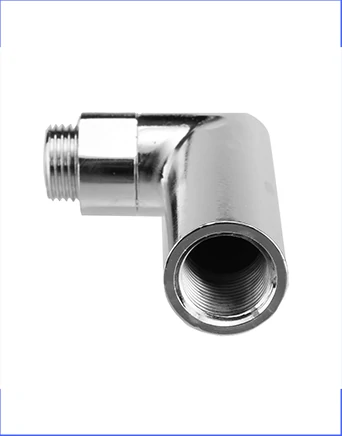Time to read: 6 min

Thread machining is an indispensable part of metalworking. With the global market's increasing demand for connectors and fittings, selecting the right threads for your applications has become crucial. This article delves into various threading technologies to help you enhance production efficiency and product quality.
What is Thread Machining?
Threading is a continuous helical ridge, typically found on the surface of a cylinder or cone. The primary function of a thread is to act as a coupling between two mechanical components, like the cap of a water bottle.
Components of a Thread
- Crest: The highest point of the thread.
- Flank: The inclined surface connecting the crest and the root.
- Root: The surface where the flanks of adjacent thread forms meet.
- Pitch: The distance between corresponding points on adjacent threads.
- Helix Angle: The angle between the helix and the thread axis.
Types of Threads
Threads can be classified based on different standards. Commonly used on fasteners are spaced threads and machine screw threads. Additionally, UNC (coarse) and UNF (fine) threads are standard classifications for the Unified screw thread system.
Internal Threads
Internal threads are threads on a concave surface. These types of threads are typically machined with a single-lip threading tool. Traditional threading taps are also used for machining internal threads.
External Threads
External threads, also known as screw threads, are common types of threads. For parts suitable for turning, an external thread can extend through the length of the part.
How to Cut Threads
Thread cutting is a key technique for creating screwed connections on parts. Whether it's single-piece manufacturing or repair work, understanding how to cut threads is crucial.
Milling
Milling is a thread machining method that uses a rotating milling cutter. The shape of the cutter conforms to the desired shape of the thread. Milling can be used to make both internal and external threads and offers high accuracy.
Threading on a Lathe
Another major threading process is threading on a lathe. This process produces a helical ridge on a workpiece. Threading on a lathe involves successive cuts using a threading toolkit.
Die-Cutting
Die-cutting is a popular method for cutting external threads. Die-cutting produces parts relatively quickly and is an economical way of cutting threads. This method has a moderate level of accuracy and quality, which is acceptable for most mass-produced parts.
Design Tips for Threading Applications
- A countersink should be at the end of internal threads.
- Lower height threads are preferable if there are no specifications.
- Using standard thread sizes and forms is more economical.
- The starting end of the thread should have a flat surface consistent with the thread's central axis.
- Tubular parts should have increased wall thickness to withstand the pressure of forming or cutting.
- The external thread ends of parts should include a chamfer.
Conclusion
Producing high-quality parts requires a comprehensive understanding of manufacturing processes. Thread machining is a crucial aspect of these processes. It's advisable to discuss with experts in threading techniques. At UnoFactory, we have decades of industry experience and a team of engineers with profound CNC project experience to ensure the best services.
We always prioritize our clients, with a support team to ensure parts meet your expectations. Our threading services are unparalleled and competitively priced. For any inquiries, feel free to contact us via email or upload your design files for an instant quotation today!
FAQ – Machining Thread
What Is the Purpose of Threading?
The main purpose of threading is to create screwed connections on parts. It is one of the best processes for single-piece manufacturing and repair works, ensuring superior part application and structural simplification.
Can Threads Be Machined on a Mill?
Yes. Threading can be done on a milling machine. For thread milling, a CNC machining center with helical interpolation is required for efficient thread milling and reliable results.
Can the Lathe Machine Create Internal Threads?
Threading on a lathe can create both internal and external threads. The chosen technique will depend on the application of your parts.




